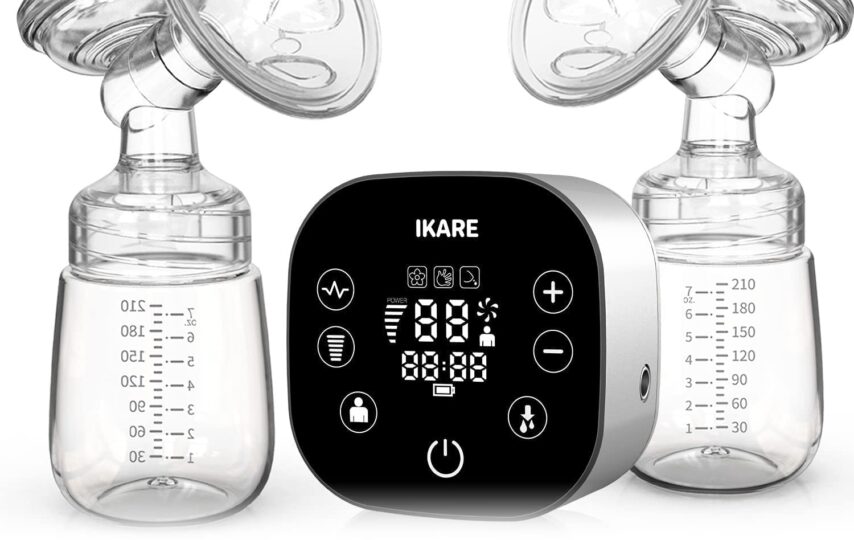There ais a plethora of options for new mothers. Choosing a breast pump is one such thing. Picking a pump that doesn’t suit your specific demands could be disastrous. Choosing the wrong pump might have negative effects on your breast health and milk production.
When shopping for a breast pump, it’s easy to feel overwhelmed by the sheer number of alternatives available. Others turn to mommy blogs or internet reviews, while still others consult professionals like licenced lactation consultants or friends and family for advice.
While it’s helpful to hear from other mothers, it’s important to remember that every postpartum experience is unique. One mother’s tried-and-true methods may not be ideal for you. You may require a different approach with your third kid than you did with your first two.
- Get some insurance.
First things first: check with your insurance company to see if they cover a breast pump. Proceed to Step 2 if you do not have insurance or do not want to use your insurance to purchase a pump.
If you want to use insurance to pay for a breast pump, the first step is to call your insurance provider and ask what you need to do to get one. They will probably tell you where to go to buy a breast pump and how to go about getting it covered.
- Learn the Jargon
You could come across some strange words while shopping for a new breast pump. Some of the most frequent utterances are as follows:
- Single electric breast pumps are designed to suck milk from a single breast at a time, as they only have one motor and one flange (the funnel section of the pump that makes contact with your breast).
- Pumping from both breasts at once is possible using a twin electric breast pump. The efficiency of these is higher than that of single pumps.
- The name says it all: a hands-free pump doesn’t require you to use your hands to operate it. A pumping bra can make pumping hands-free, but it’s still not a very stealthy option because the milk bottles may protrude from the bra.
- Not all hands-free pumps are wearable, but all wearable ones are. True wearability in a pump is being able to pump in public without drawing attention to yourself.
- These pumps do not require an outlet because they are battery-operated. A rechargeable or disposable battery powers them.
- Breast milk is extracted by a motorised pump in electric breast pumps, which are powered by either an electrical outlet or a battery.
- When pumping only one breast, manual breast pumps must be performed manually. These pumps are not connected to any sort of power source.
- Maximum breast milk production is made possible by hospital-grade breast pumps. A hospital-grade pump may be recommended by lactation consultants to help boost milk production. These pumps are often more powerful and large than those intended for individual use and are available for rent. Keep in mind that the term “hospital-grade” might imply different things to different individuals, so you should exercise caution when shopping for a pump. Authentic hospital-grade pumps are risk-free for shared use. Although the motors in some brands of pumps are really “hospital grade,” they are not designed for shared use. While effective, hospital-grade pumps can be cumbersome and inconvenient to transport.
- Unlike hospital-grade pumps, even closed-system models are intended for usage by a single person at a time.
- A backflow barrier between the pump components and the tubing of a closed-system breast pump keeps milk from splashing into the pump.
- A breast pump with an open system allows milk to seep into the pump’s components, including the motor, because there is no barrier between the pump’s tubing and the pump’s parts. After each usage, open-system pumps must be thoroughly sterilised and dried to prevent the spread of bacteria.
- Determine Your Choices
Compare the benefits and drawbacks of the many possible pump options, such as single vs. double pumps, battery vs. electric, open vs. closed system, and so on.
When you know exactly what you need from a pump, shopping for it becomes much less of a chore. It’s easy to eliminate the single electric, manual, and open system pumps from consideration in favour of the double electric, closed system, rechargeable battery option. The next step is to decide whether or not you want a handheld or wearable pump. Keep in mind that with the purchase of a pumping bra, you can pump without using your hands.
- Think about proportions.
Examine the heft and dimensions of the available breast pumps. They range in size from those that fit in the palm of your hand to those that are more like dinner plates. Choose a compact pump if you need something that’s easy to carry about. A larger pump could be ideal if you don’t plan on taking it anywhere than home or the office to pump.
Consider the purse, backpack, or diaper bag that you’ll use to transport the pump. Check that the bag you plan to use can accommodate your pump and all of its accessories.
Remember that the size of the motor isn’t always proportional to the size of the pump.
- Size of Motors
The speed of the motor in a breast pump is indicated both in millimetres of mercury (mmHg) and cycles per minute (cpm). Take careful notice of the features each pump provides.
The vacuum created can be shown in millimetres of mercury. The rpm indicates the motor’s speed by revealing how often it rotates. Quality pumps usually have a mmHg of at least 250 and a cpm of at least 38. Anything less could be uncomfortable for your breasts or not do enough to keep your milk supply up.
- Estimate the Number of Necessary Pumps
Multi-pump use is common among mothers. Some individuals have their own personal pumps, while others have access to hospital-grade pumps for rent. There are mothers who use both manual hand pumps and electric breast pumps. Some people even have two pumps—one at home and one at the office. Any of these setups would work, so long as they provided enough pumping power collectively.
- Think About It: Do You Require a Portable Pump?
Fashionable heels are currently in vogue. While many nursing mothers have both a personal and a wearable pump, the former isn’t necessary for all. A lot of mothers come to me saying things like, “I’m a nurse,” “I’m a student,” “I’m a hairdresser,” and “I need a wearable pump.” Yes, I get it completely! Even if a pump is wearable, that doesn’t guarantee it can handle your volume needs.
A tiny motor fitted to the breast cup of some wearable pumps prevents them from totally emptying the breast. Some breast pumps for nursing mothers are battery-operated, while others feature a motor that can be carried in a pocket.
Unless the motor fits the aforementioned parameters (250+ mmHg and 38+ cpm), a wearable pump shouldn’t be your primary breast pump. In order to maintain a healthy milk supply while using a wearable pump, it is recommended that you also have access to a second, equally effective breast pump.
- Focus on Specifics
The warranty period, features, attachments, and accessories of a pump should all be considered when making a purchase. Considerations like these will be useful in narrowing down your options for a suitable pump.
Warranties
After years of selling, renting, and using breast pumps, I can say with confidence that any pump whose manufacturer offers only a brief warranty is likely to break down during the first few months of use. If possible, you should search for pumps that come with a guarantee that lasts for at least two years.
Features
Pumps’ features are crucial, therefore I’ll go through them briefly. The marketing copy for breast pumps is typically very flowery. Focus on the specifics that mean the most to you.
Pumping in a public space may necessitate the use of a quieter setting, such as “whisper” or “ultra-quiet.”
If you want to keep milk from getting into the pump’s tubes, backflow protection is something to look for. Keep an eye out for extras like touchscreens, night lights, and memory settings.
Accessories
The accessories necessary to pump breast milk are typically included with the pump. Check out the various pumps’ attachment options. Some models may include complementary add-ons that negate the need to buy additional accessories.
Some are sold as complete sets with a pump and accessories, while others include neither. Some pumps have an extra battery pack or car charger, but not all. Consider a pump with an integrated rechargeable battery if you need a portable power source. These batteries automatically charge when the pump is plugged in, so there’s one less thing to remember to do.
- Examine Various Costs
Not all high-priced pumps are superior. Some excellent pumps can be found at more affordable price points. But don’t skimp on quality to save money. Choosing a cheaper pump that lacks sufficient mmHg or cpm can backfire if you end up with breast health problems, a lower milk supply, or have to buy or rent a new pump.
Pumps may be provided “at no charge” by some insurance carriers, while others may incur an additional fee. A higher price does not guarantee better pump quality. It just indicates the pump has a higher wholesale price, necessitating a higher retail price to cover the higher wholesale cost. Don’t fall into the trap of thinking that a more expensive pump is better.
Contact us if you want more information about the hands-free products.



